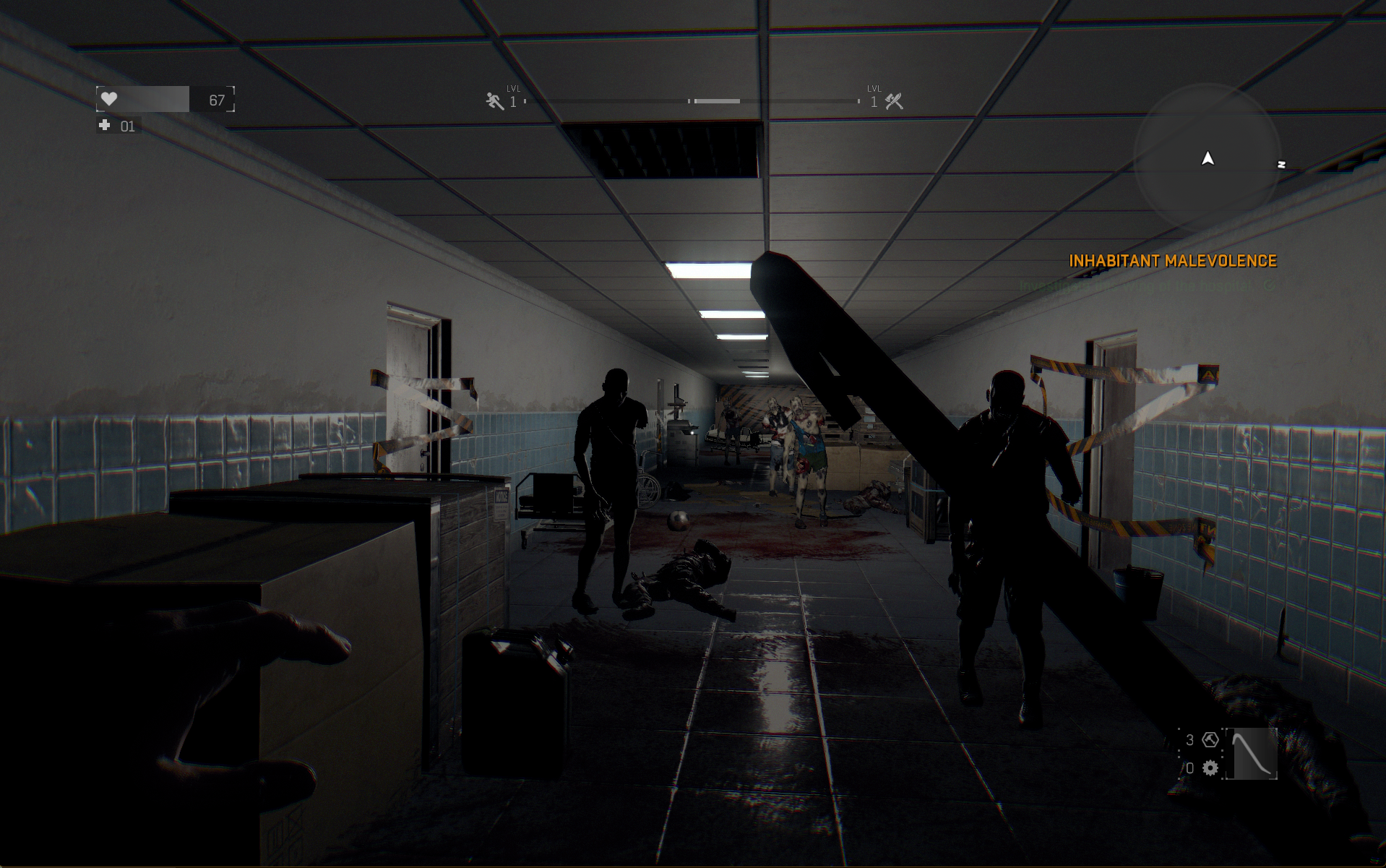Inhabitant Malevolence
Inhabitant Malevolence

“Inhabitant Malevolence” is a custom quest made in Dying Light
A chilling wave of silence greets you as you wake up in a deserted hospital, the unsettling quiet broken only by the distant groans of the infected. Disoriented and alone, you must navigate the labyrinthine corridors and abandoned wards of this once-bustling medical center. Scavenge for scarce supplies, solve environmental obstacles, and confront the horrors that lurk in the shadows to find your way out. But be warned, the hospital holds a dark secret, and escape may not be as simple as finding the exit.
Features:
Intense Atmosphere: Experience the chilling ambiance of a desolate hospital, complete with eerie sound design and unsettling visuals.
Resource Management: Supplies are scarce, forcing you to make tough choices and prioritize your needs.
Environmental Storytelling: Uncover the hospital's tragic fate through scattered notes and the environment itself.
Unpredictable Threats: Face a variety of infected, each with unique behaviors and challenges.
Are you brave enough to escape Quarantine Zone?
Development Info:
Game: Dying light
Genre: horror, FPS
Mode: Single Player
Team Size: 1 Developer
Engine: dying light developer tools
Development Time: 100 hours
Responsibilities:
Concept and Preprodcution Documentation
narrative Design and Implementation
Scripting
Gameplay design and implementation
World Building
Lighting and aesthetic design
design goals
create a level that encourages player exploration
implement survival horror-like gameplay that encourages resource management
craft environments that balance between realism and player experience
what i learned
the horror genre is like no other
My foray into crafting horror experiences began unexpectedly with Dying Light. Building a level for this zombie-infested world pushed me beyond just placing obstacles and enemies. I had to consider the player's journey, how to manipulate their senses, and build tension. Limited visibility in dark corridors, the sudden rush of a Volatile from the shadows, and strategically placed audio cues all became tools in my arsenal. Through trial and error, playtesting, and refining, I learned the delicate art of balancing fear and fun, creating a truly immersive and terrifying experience for players. Dying Light became my sandbox for understanding the psychology of horror, teaching me how to craft an atmosphere of dread and deliver those heart-pounding jump scares.
resource management is like walking a tightrope
Balancing resources in a survival horror game is like walking a tightrope. Too many supplies, and the player feels empowered, diminishing the sense of vulnerability essential to the genre. Too few, and frustration mounts, turning survival into a tedious chore. The sweet spot lies in creating a constant sense of scarcity without making the player feel completely helpless. It's about carefully managing the economy of ammunition, health packs, and crafting materials, forcing players to make difficult choices and weigh every encounter. Do they risk a confrontation with limited ammo, or conserve resources and try to sneak past? Each decision should carry weight and contribute to the overall feeling of tension and desperation that defines survival horror.
playtesting is everything
In horror, confinement is key. Carefully controlling the player's movement is crucial for maintaining atmosphere and guiding them through the intended experience. Invisible walls, strategically placed obstacles, and environmental storytelling all play a role in subtly herding players along the desired path. However, theory crafting only goes so far. Rigorous testing becomes paramount to ensure players can't break the illusion by discovering unintended routes or escaping the confines of the level. Every nook and cranny needs to be explored with the mindset of a player determined to break the game, patching up any holes that might allow them to slip through the cracks. A single exploitable gap can shatter the carefully constructed sense of dread, reminding the player that they are, in fact, in a game, and robbing the experience of its power..
guiding players isn’t a one-size fits all solution
While notes and environmental storytelling contribute to a rich and immersive experience, they sometimes fall short in providing clear direction. Players can easily miss crucial details or misinterpret subtle clues, leading to frustration and a breakdown in immersion. Therefore, it's essential to incorporate more explicit visual cues to guide them along the intended path. Lighting, architectural design, and landmarking techniques can subtly draw the player's eye and subconsciously nudge them in the right direction. A strategically placed light source at the end of a hallway, a trail of blood leading towards a hidden passage, or a distinctive landmark in the distance can all act as effective waypoints without disrupting the flow of gameplay. This delicate balance between player freedom and subtle guidance ensures a smoother, more enjoyable experience, allowing them to fully immerse themselves in the horror without getting lost or disoriented.























